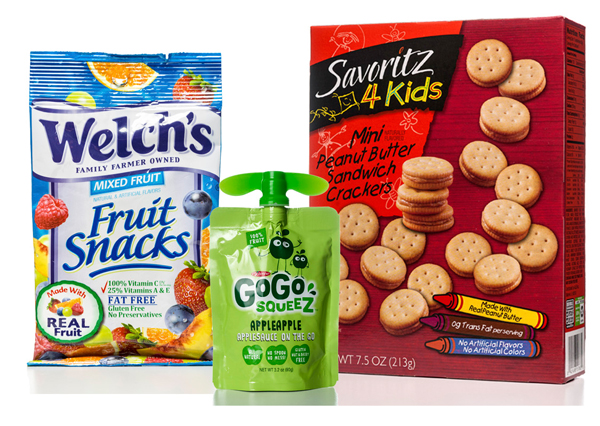 There was a time when the only aisles in the grocery store truly dedicated to children were mainly stocked with little jars of puréed vegetables and fruits, along with packages of rice and creamed wheat cereals—all intended for the under 12-month crowd just starting to eat solids. Today, you can find foods targeted at children of all ages in just about every aisle. In 2013, nearly 25 percent of the best-selling newly introduced convenience foods were targeted at children, according to retail market research firm IRI. And Packaged Facts estimates sales of kid-specific foods will reach $30 billion per year by 2018.
There was a time when the only aisles in the grocery store truly dedicated to children were mainly stocked with little jars of puréed vegetables and fruits, along with packages of rice and creamed wheat cereals—all intended for the under 12-month crowd just starting to eat solids. Today, you can find foods targeted at children of all ages in just about every aisle. In 2013, nearly 25 percent of the best-selling newly introduced convenience foods were targeted at children, according to retail market research firm IRI. And Packaged Facts estimates sales of kid-specific foods will reach $30 billion per year by 2018.
These kid-specific foods can be found in nearly every department of the grocery store—from produce to frozen and deli to dairy. Many of them are presented as convenient snacks, in part because of our increasingly busy lifestyles and in part because snacking has become practically a whole extra meal for children. According to research from DuPont Nutrition and Health, up to a quarter of children’s daily calorie intake comes from snacking.
The biggest winners amongst parents in this growing market are healthier offerings—particularly those that contain fruits and vegetables, such as smoothies, veggie chips, fruit snacks, and blended purées packaged in convenient squeeze pouches. Of course, it’s one thing for parents to buy healthy kids’ snacks—and another for their children to actually eat them. Experts say this is where marketing and packaging come into play. There’s a growing trend amongst retailers and CPGs to make healthy kids’ snacks more appealing by using “junk-food style” marketing—including bright displays, exciting advertisements and engaging character mascots.

Some CPGs are also experimenting with new flavor combinations to make their healthy offerings a fair swap for less-healthy favorites. For example, Bolthouse Farms has introduced a new line of Veggie Snackers—small bags of baby carrots that come with pouches of bold-flavored seasonings. When children dip the carrots into the seasoning, they get the flavor and crunch of a Dorito, along with the health benefits of a carrot.
For those looking to break into the market, this sort of clever positioning is key to ensuring kids will actually seek out their products—and as a result, parents will buy them. Telling kids what they should eat is not very effective, said David Just, a behavioral economist at Cornell University, in a recent interview with NPR. “They’re not concerned about beta-carotene, or what diseases they might get when they’re 50. They’re much more in the moment.”

